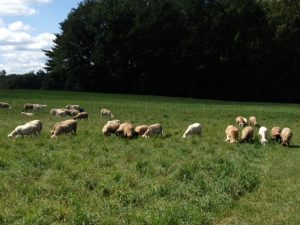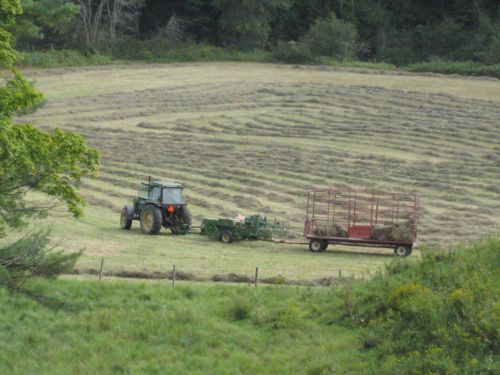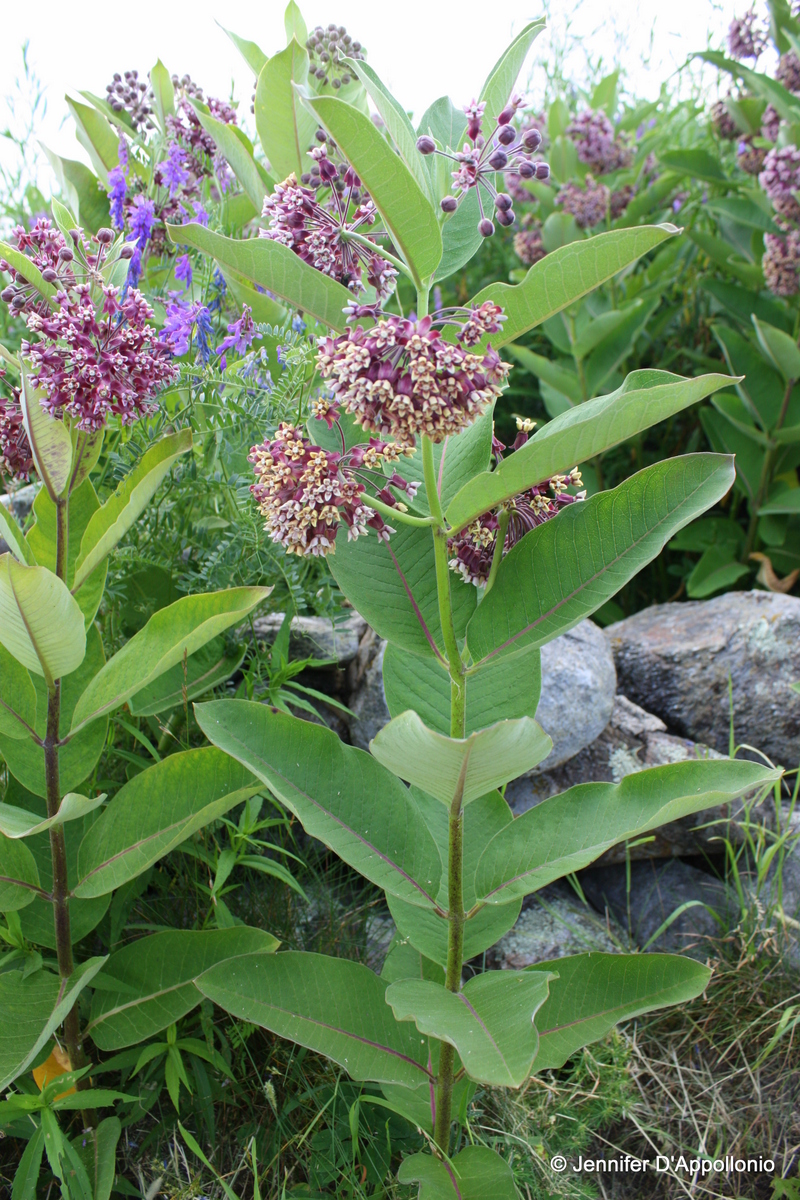Weed Control Options for Pasture
(Lesson 4. Weed Control in Pastures continued)
Good weed control takes dedication and utilization of several methods, especially with certain weeds. Specific options include: 1) grazing management, 2) mechanical control, and 3) chemical control.
Grazing Management
 Proper grazing management has proven to be a very useful weed control mechanism. Good fertility goes hand in hand with good weed control. Controlled grazing allows beneficial plants to become strong, productive plants and out-compete the weeds. Rotational grazing helps in this process because it gives beneficial plants the opportunity to rest after grazing, and then grow undisturbed before being grazed again. High stocking rates in small paddocks can also be used to “force” animals to consume forage that might normally be considered a “weed.”
Proper grazing management has proven to be a very useful weed control mechanism. Good fertility goes hand in hand with good weed control. Controlled grazing allows beneficial plants to become strong, productive plants and out-compete the weeds. Rotational grazing helps in this process because it gives beneficial plants the opportunity to rest after grazing, and then grow undisturbed before being grazed again. High stocking rates in small paddocks can also be used to “force” animals to consume forage that might normally be considered a “weed.”
Soil pH management is critical in the Northeast where are soils are naturally acidic. Regular soil testing should be considered. If soil pH levels are below 6.0, conditions favor weed growth as opposed to desirable grasses and legumes. A soil program that includes lime applications when indicated is essential. For most applications, soil tests will indicate the use of high Magnesium limestone or Dolomitic limestone to improve the magnesium status in the soil and the resulting forage. This is important for both plant health and for the prevention of metabolic diseases in livestock such as grass tetany.
Grazing management alone, however, will not normally correct serious pre-existing weed problems without causing losses in animal performance. Plants such as thistles, brush, and poisonous plants may continue to be a problem even after you have intensified your system, since they are seldom eaten even at high stocking rates.
Mechanical Control
 Mechanical weed control is also a very good option in situations where equipment can be utilized or fairly small infestations of weeds are present. This method takes time and dedication, but has been successfully used in overtaking extensive weed control problems.
Mechanical weed control is also a very good option in situations where equipment can be utilized or fairly small infestations of weeds are present. This method takes time and dedication, but has been successfully used in overtaking extensive weed control problems.
Repeated mowing, clippings, and hand weeding can diminish weed infestations. When the weeds are in the early bud to early bloom stage, cut them 3 to 4 inches above the ground. This weakens the weed by depleting the root reserves and prevents the further spread of seed. Timing of the mowing is critical because you must eliminate the seed production, which will prevent future re-infestations. This is true of all weed control options.
Plants such as Canadian thistles are difficult to control due to their ability to produce a second seed head during the same growing season. This forces a follow-up clipping. In addition to re-growing, they commonly produce the second seed head close to the ground, making clipping very difficult. Caution must also be observed when mowing woody plants, as some plant material such as cherry tree leaves can become toxic to livestock after they have been artificially desiccated.
Tillage and reseeding can be used to suppress weeds as part of a pasture renovation, but is seldom used to manage weeds in an existing pasture as it is costly and time consuming.
Chemical Control
Chemical control of weeds is often looked at as the first option of control, but consideration should go into developing a plan. Chemical weed control can be a challenge because of its selective or nonselective means of controlling specific plant species. For example, you can use 2-4,D to control thistles in some cases. The problem is that 2-4,D will also kill desirable legumes that naturally persist or that were planted. It is essential to read chemical labels and also use resource people such as your local UMaine Extension county educator.
Weed control in grass pastures is therefore limited to controlling broadleaf weeds and is generally accomplished with post-emergence, translocated herbicides. These herbicides are absorbed by the foliage and move within the plant. As a result, they may produce a toxic effect a considerable distance from the point of entry. Post-emergence applications are greatly affected by the age of the weeds and the growing conditions. Applications should be made when the weeds are young and actively growing. Weather conditions are also important consideration as the herbicide may need time to be absorbed.
For control of summer annual weeds such as lambsquarters, translocated herbicides should be applied to the foliage of seedling plants in the spring or early summer. The rosettes of winter annuals such as shepherdspurse should be treated in the fall or early spring.
Most of the problem weeds in grass pastures are either biennial or perennial broadleaf weeds. Post-emergence treatments for biennial weeds such as common burdock or simple perennials such as dandelion, should be applied to the rosettes, or other fall growth, in the fall or early spring before these plants bolt (send up a flower stalk).

Foliar treatments for creeping perennials such as common milkweed must be made when they are actively growing and have a large leaf area. The ideal time for treating them is after they have reached the bud stage in mid to late summer. During this period they have their maximum leaf area and are storing food reserves for the winter.
Because the herbicides recommended for broadleaf weed control in pastures will also kill legumes, they should not be used as broadcast treatments if legumes are present in the pasture. Spot treatments would be required, or there will be a lot of bare ground after the treatment, inviting more weed species to appear, and diminishing the value of the pasture. This is especially true if you choose to use non-selective vegetation control products such as Touchdown® or Roundup® . Annual re-treatment may be necessary for several years to obtain long-term control. Spot treatments can be accomplished with a wick applicator, which looks like a hollow hockey stick with either rope or roller applicator on the end.
Another challenge that exists with chemical weed control is that after existing weed(s) are killed, the weed seeds existing in the soil still have an opportunity to germinate and grow. In this situation you would need to be sure to seed the bare area following chemical application so the desired species has a chance to grow.
Producers should also be aware of grazing restrictions associated with herbicides. The label of every product will list restrictions such as how long before animals can go back and graze, harvest restrictions, animal withdrawal times before slaughter and time of year products should be applied for effective control. Product restrictions for milk and meat must also be followed to maintain a safe food supply.
Identification of the weeds is the essential first step to good chemical weed control. One of the best resources is “Weeds of the Northeast” from Cornell University Press. Also included in this lesson is a glossary of terms commonly used in identification of weeds. Your local UMaine Extension county educator can also assist you in this activity.
